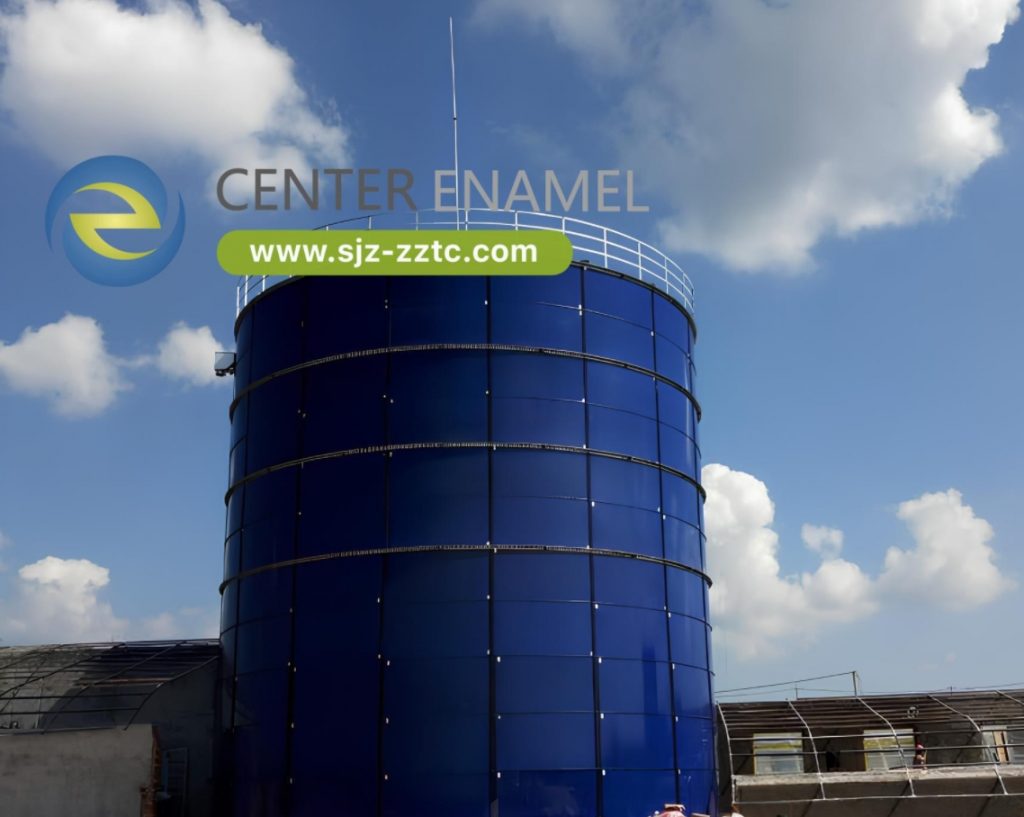CSTR Systems for Agricultural Waste-to-Biofertilizer Projects | Center Enamel

As the agricultural sector continues to grow, so does the challenge of managing vast quantities of organic waste. In response, the conversion of agricultural waste into biofertilizer has emerged as a sustainable and cost-effective solution. Among the technologies employed in this transformation, Continuous Stirred Tank Reactor (CSTR) systems play a pivotal role in ensuring efficient and reliable conversion processes. Center Enamel is at the forefront of providing advanced CSTR systems designed specifically for agricultural waste-to-biofertilizer projects.
Modern agricultural practices generate significant volumes of organic residues, including crop residues, animal manure, and processing by-products. Improper handling of these wastes can lead to environmental issues such as groundwater contamination, greenhouse gas emissions, and nutrient imbalances in soil. Converting agricultural waste into biofertilizer not only mitigates these environmental risks but also recycles valuable nutrients back into the soil, promoting sustainable crop production.
Biofertilizers derived from anaerobic digestion processes contribute to:
- Nutrient Recycling: Recovering nitrogen, phosphorus, and potassium for soil enrichment.
- Waste Reduction: Decreasing the volume of waste that requires disposal.
- Environmental Protection: Minimizing methane and other greenhouse gas emissions.
Continuous Stirred Tank Reactor (CSTR) systems are widely used in anaerobic digestion processes for converting organic waste into biofertilizer. In a CSTR system, the feedstock—comprising agricultural waste—is continuously mixed and maintained under controlled conditions, facilitating the microbial breakdown of organic matter. This results in the production of biogas and a nutrient-rich digestate that can be further processed into biofertilizer.
Key operational principles of CSTR systems include:
- Uniform Mixing: Continuous agitation ensures that the organic material is evenly distributed throughout the reactor, promoting consistent microbial activity.
- Controlled Environment: Parameters such as temperature, pH, and retention time are closely monitored and regulated to optimize the digestion process.
- Steady-State Operation: The continuous input of waste and simultaneous output of digestate allows the system to operate in a steady state, maintaining constant bioconversion rates.
Technical Advantages of CSTR Systems
CSTR systems offer several distinct technical benefits that make them an ideal choice for agricultural waste-to-biofertilizer projects:
- Enhanced Process Efficiency
The continuous mixing in a CSTR system ensures that all organic particles are in close contact with the microbial population, leading to a higher rate of decomposition. This efficient process maximizes biogas production and results in a more complete conversion of waste into digestate. - Adaptability to Diverse Feedstocks
Agricultural waste is inherently variable in composition. CSTR systems can accommodate a wide range of organic materials, from high-moisture crop residues to nutrient-dense animal manure. This flexibility is crucial for integrated agricultural operations that generate multiple types of waste. - Consistent Product Quality
The controlled environment within a CSTR system leads to a stable microbial ecosystem. As a result, the digestate produced is consistent in quality and nutrient content, making it a reliable biofertilizer product for subsequent agricultural use. - Scalability and Modular Design
CSTR systems are available in various sizes and configurations, allowing them to be scaled up or down to match the production capacity of a farm or processing facility. Their modular design facilitates future expansion as waste generation and biofertilizer demand increase. - Improved Energy Recovery
While the primary goal is biofertilizer production, the biogas generated during the digestion process can be captured and used as a renewable energy source. This dual benefit enhances the overall sustainability of the operation and contributes to energy self-sufficiency.
Why Choose Center Enamel?
Center Enamel brings decades of expertise in the design and manufacture of advanced storage and processing systems. Our CSTR systems for agricultural waste-to-biofertilizer projects are engineered with precision and built to meet rigorous international quality standards. Key reasons to choose Center Enamel include:
- Innovative Design and Engineering:
Our systems are developed using state-of-the-art technology, ensuring optimal performance, high process efficiency, and reliable operation under demanding agricultural conditions. - Customizable Solutions:
Recognizing that each agricultural operation is unique, we offer tailored solutions that accommodate varying waste compositions, production capacities, and operational goals. Our engineering team works closely with clients to design systems that are both effective and scalable. - Sustainability Commitment:
At Center Enamel, sustainability is a core principle. Our products not only improve waste management practices but also contribute to renewable energy production and reduced environmental impact. We are dedicated to supporting the agricultural sector in its transition towards more sustainable practices. - Global Experience and Support:
With a track record of successful installations worldwide, Center Enamel is a trusted partner for agricultural waste management projects. Our comprehensive support services—from initial consultation to on-site installation and after-sales maintenance—ensure that our clients receive a seamless and efficient solution.
For agricultural producers and processing facilities seeking to enhance waste management practices while boosting biofertilizer production, Center Enamel offers a proven and customizable solution. Contact Center Enamel today to learn how our CSTR systems can support your transition to a more sustainable and economically viable agricultural future.
